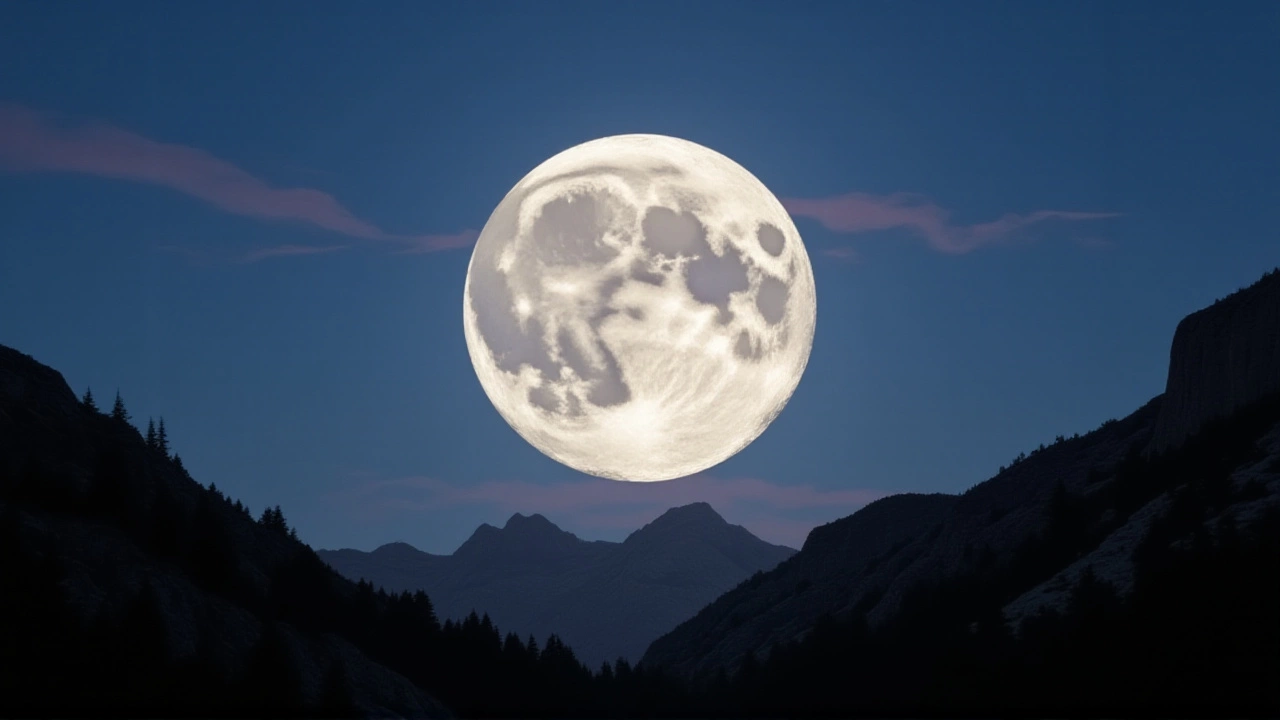When Dr. Noah Petro, lunar scientist at NASA's Goddard Space Flight Center confirmed that the October 17, 2025 full moon will be a supermoon, stargazers across continents started checking their calendars. The event, officially dubbed the Hunter’s Moon supermoonglobal, reaches peak illumination at 11:26 AM EDT (15:26 UTC) and will sit a mere 357,364 km (222,055 mi) from Earth – its closest approach this year.
What Makes This October 2025 Moon a Supermoon
Supermoons happen when a full moon coincides with lunar perigee, the point in the Moon’s elliptical orbit where it hugs the Earth most tightly. Because of the reduced distance, the disc appears up to 14 percent larger and shines roughly 30 percent brighter than a full moon at apogee. While the size boost is measurable with telescopes, casual observers often need side‑by‑side photos to spot the difference.
Cultural Roots of the Hunter’s Moon
The name “Hunter’s Moon” stems from both Native American and early European traditions. Historically, hunters used the bright autumn light to extend their pursuits before winter’s darkness set in. Royal Observatory Greenwich in London notes that the moniker reflects a time when communities relied on the moon’s glow for gathering and preparation.
When and Where to Watch
Because the Moon rises shortly after sunset, the most dramatic view occurs near the horizon, where the moon illusion makes it look even larger. In London, moonrise will be around 6:42 PM local time; in New York City, expect it at roughly 6:24 PM EDT. The disc will stay aloft throughout the night, setting near sunrise on October 18.
Expert Perspectives
Dr. Jackie Faherty, senior scientist at American Museum of Natural History points out that while the visual difference is genuine, most people won’t notice it without a direct comparison. "The supermoon’s brightness can affect nocturnal wildlife, and it’s a great teaching moment for the public," she adds.
How to Capture the Moment
Astrophotographers recommend using a telephoto lens (300 mm or longer) or a modest telescope with a tracking mount. The sweet spot is when the Moon hovers over a recognizable landmark – think the London Eye or the New York skyline – to add context. Clear skies are essential; a quick check of local forecasts the night before can save hours of disappointment.
Community Events and What’s Next
A surge of interest has already spurred dozens of astronomy clubs to schedule public viewings, often paired with short talks about lunar cycles. In Greenwich, the Royal Observatory is hosting a free telescope night, while the New York Amateur Astronomers Society plans a rooftop gathering on the Upper West Side.
This October supermoon will be the last of 2025; the next one won’t appear until late 2026, making the upcoming weeks a prime window for both seasoned sky‑watchers and curious newcomers.
Key Facts
- Date & time: October 17, 2025, 11:26 AM EDT (15:26 UTC)
- Distance at perigee: 357,364 km (222,055 mi)
- Apparent size boost: up to 14 % larger
- Brightness increase: ~30 % brighter than a typical full moon
- Moonrise times: 6:42 PM in London, 6:24 PM in New York City
Frequently Asked Questions
Why is the October 2025 supermoon called the Hunter’s Moon?
The name dates back to Indigenous and early European hunting seasons, when the bright autumn moon allowed hunters to work longer after sunset before the harsh winter set in.
How much larger will the Moon actually look?
At perigee the Moon’s angular diameter can be about 14 percent larger than at apogee. In practical terms, it may seem a thumb’s width bigger when you compare photos taken side by side.
What are the best times and places to view the supermoon?
Viewing just after moonrise gives the biggest apparent size because of the moon illusion. In London look for a 6:42 PM rise, in New York City around 6:24 PM EDT. Clear, dark skies away from city lights are ideal.
Can I photograph the supermoon with a smartphone?
Smartphones can capture the event, but details will be limited. For sharper images, attach a clip‑on telephoto lens and use a tripod to avoid blur.
When will the next supermoon occur after 2025?
The next supermoon isn’t expected until late 2026, making the October 2025 display the final major lunar highlight of the year.
